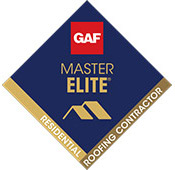Types of roofs by pitch
The biggest catch-all category for roofs is the pitch, or slope of the roof. The value, calculated as rise over run, is expressed in terms of how many inches the roof rises for every twelve inches that the roof covers laterally.

Flat roofs, despite the name, aren’t quite flat; some degree of sloping is required for water to drain and prevent it from accumulating, but anything with a slope of less than 2:12 can be called a flat roof. Flat roofs are generally easier to construct than others, and have the added benefit of being easy to walk on, but not all roofing materials are suited to a flat roof.
Conventional roofs are those which are suited to most roofing materials, with pitch ranging from 4:12 to 9:12. This is the type of roof best suited to roofing with asphalt shingles; anything steeper generally needs special materials and construction. While low-slope roofs (2:12 to 4:12) and flat roofs can be roofed with shingles and shakes, care must be taken to include a waterproof membrane under the shingles to prevent water penetration.
Types of siding by material
The material you choose for your siding will affect the styles in which your siding can be made. Cedar shakes and shingles all have the same basic shape; shingles, being machine-cut, are more uniform in shape. Shakes were originally hand-made, and tend to have slight variations in shape because of this. Though wood shakes can still be made by hand, small irregularities have been included in factory-made machine-cut shakes to give them that hand-made look.
Vinyl siding is rather more versatile than wood, and while it can be formed into shakes and shingles, too, it is also available in several other shapes. Vinyl can be made into lapboards, horizontal and vertical panels, fish scales, and even beaded designs. It is also available in over 300 colors, making vinyl siding very versatile, and easily matched to any home.
We’re done with the top and the sides, how about the doors and windows? More on this in part III.










